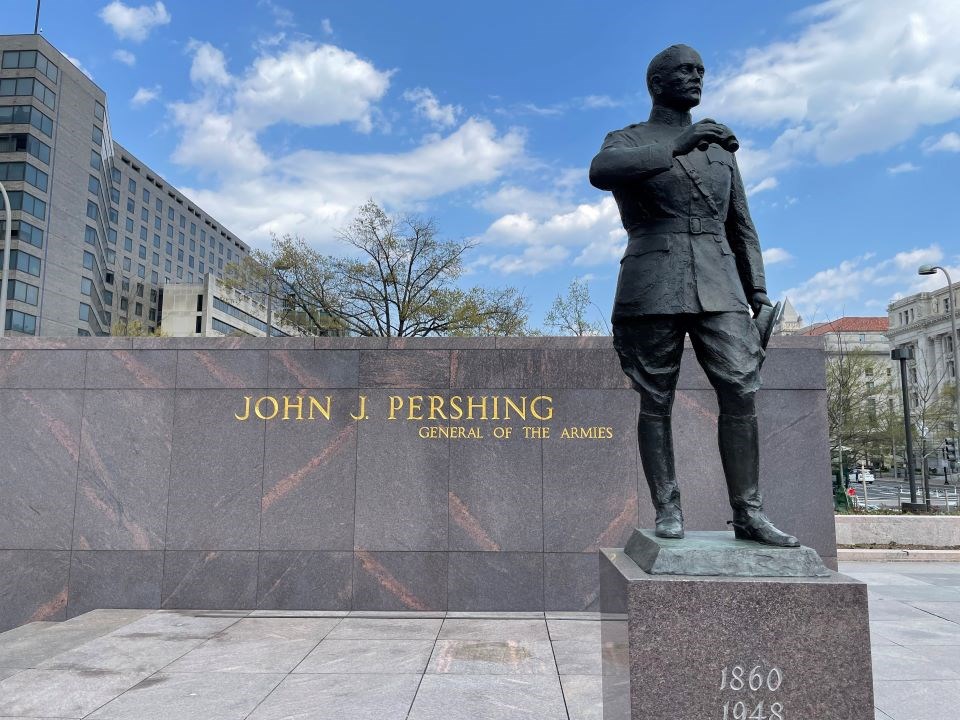
The American Battle Monuments Commission was given responsibility for planning and construction of the memorial. The ABMC had been established in 1923 to honor members of the U.S. military at home and in the locations where they served, and Pershing led the organization as its first chairman from 1923 until his death in 1948. In 1966, Congress authorized the construction of the memorial to Pershing along Pennsylvania Avenue (Reservation 617) and stipulated that it would also honor the American Expeditionary Forces troops he commanded. The memorial was dedicated on May 14, 1981; the statue of Pershing would be added in October 1983. The American Expeditionary Forces Memorial was designed by architect Wallace Harrison, whose other designs of note include the Metropolitan Opera House in New York City, the United Nations complex and LaGuardia and John F. Kennedy airports. Set amongst trees, a statue of Pershing is bordered by two ten-foot high Dakota mahogany granite walls. On the south wall are maps of the American sectors of the Western Front and text describing the vital contributions of American forces toward winning and ending the Great War, not only on the Western Front but throughout other sectors as well. The bronze statue of General Pershing was completed by sculptor Robert White (grandson of American architect Stanford White). Dedicated in October 1983, the eight-foot tall bronze portrait statue stands atop a Dakota mahogany granite pedestal and captures the Pershing remembered by his troops - standing straight, square-shouldered, iron- jawed, fierce-visaged, field glasses in hand, confidently gazing across the battlefield toward victory and reestablishment of peace and security throughout Europe. Engraved on the reverse side of the wall behind the statue is General Pershing's tribute to the officers and men of the AEF, published in his memoir, My Experiences in the World War (1931): “In their devotion, their valor, and in the loyal fulfillment of their obligations,
the officers and men of the American Expeditionary Forces have left a heritage of whom those who follow may ever be proud.” |
Last updated: April 16, 2021
